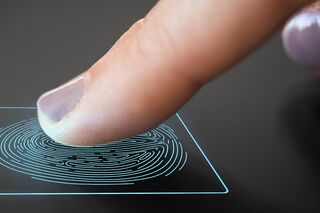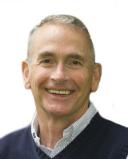Genetics
Why the Human Brain Is So Good at Detecting Patterns
Pattern recognition is a skill most people don’t know that they need or have.
Posted May 19, 2021 Reviewed by Chloe Williams
Key points
- Humans can't help but look for patterns and find structure in the information coming their way.
- The neocortex, the outermost layer of the brain, is found only in mammals and is responsible for humans' ability to recognize patterns.
- Although computer algorithms can spot patterns, an algorithm has not yet been developed that outperforms the human mind.
"Over centuries of evolution, humans’ pattern recognition skills determined natural selection. Hunters skilled at spotting prey and predator and telling poisonous plants from healthy ones offered them a better chance of survival than those blind to the patterns. It enabled the survivors to pass on those pattern-friendly genes to future generations." (Neil deGrasse Tyson, 2015)
While the business of science is to search for patterns, it is the business of all of us to be pattern seekers. What distinguishes us from most of the animal kingdom is the desire to find structure in the information coming our way.

In fact, we can’t help it. Our brain craves patterns (Bor, 2012). The talent to recognize patterns is something most people don’t know they need or realize that they already have. If we can turn data into a pattern or rule, then according to Daniel Bor, “near-magical results ensue. We no longer need to remember a mountain of data; we need to only recall one simple law” (Bor, 2012).
A special layer of the brain found only in mammals is responsible. It is called the neocortex, the outermost layer of the brain. Because of its numerous folds, it accounts for 80 percent of the weight of the human brain. According to Ray Kurzweil, the basic structure of the neocortex is organized around groups of neurons called pattern recognizers estimated to number 300 million. Over the course of a lifetime, Kurzweil proposed that these recognizers can rewire themselves to one another to account for the new visual, number, nature, word, and people patterns we learn over time (Kurzweil, 2012).
The Human Brain Still Outperforms Algorithms
We all have an innate ability to recognize patterns. But why, Brendon McConnell, asks, should we use humans and not machines (McConnell, 2013)? If we have the technology to capture data, why don’t we have the technology to analyze it? Answer: A computer algorithm has not yet been developed that outperforms the human mind to analyze data and detect patterns. Becoming self-aware of our own power to detect patterns and better skilled in how to harness it puts everyone in reach of discovery and innovation. The story of Ray Kroc shows how everyday people can make discoveries big and small.
It was common in the 1940s for the corner drugstore to order one multimixer to prepare milkshakes, even two if it was a large operation. But when multimixer salesman, Ray Kroc, received an order for 10 mixers from a restaurant in California, this outlier pattern caught his attention. Why would a restaurant need that many? His curiosity got the best of him. He traveled to San Bernardino California to meet the owners of the restaurant, Dick and Mac McDonald. There, Kroc discovered a restaurant that attracted hundreds of patrons each day, filled orders in 15 seconds, and made 20,000 milkshakes monthly. Kroc declared that he had to become involved in this. His discovery helped Kroc launch the McDonald restaurants with the famous golden arches — today, one of the most successful fast-food restaurant chains in the world (Love, 1986).
What will you discover when you recognize the next pattern?
Special thanks to Jane Vottero for helping to edit this blog.
References
Tyson, Neil de Grasse (2015), Cosmos: A Spacetime Odyssey-transcripts (Episode 3), When Knowledge Conquered Fear
Bor, D. (21012). The Ravenous Brain. New York: Basic Books.
Kurzweil, R. (2012). How to Create a Mind- The Secret of Human Thought Revealed. New York: Penguin Books.
McConnell, B. B. (2013, May 3). Rabble.ca. Retrieved from Big Data: The role of citizen scientists in the age of information abundance : http://rabble.ca/news/2013/05/big-data-role-citizen-scientists-age-info…
Love, J. (1986). McDonald's- Behind the Arches. New York: Bantam.


